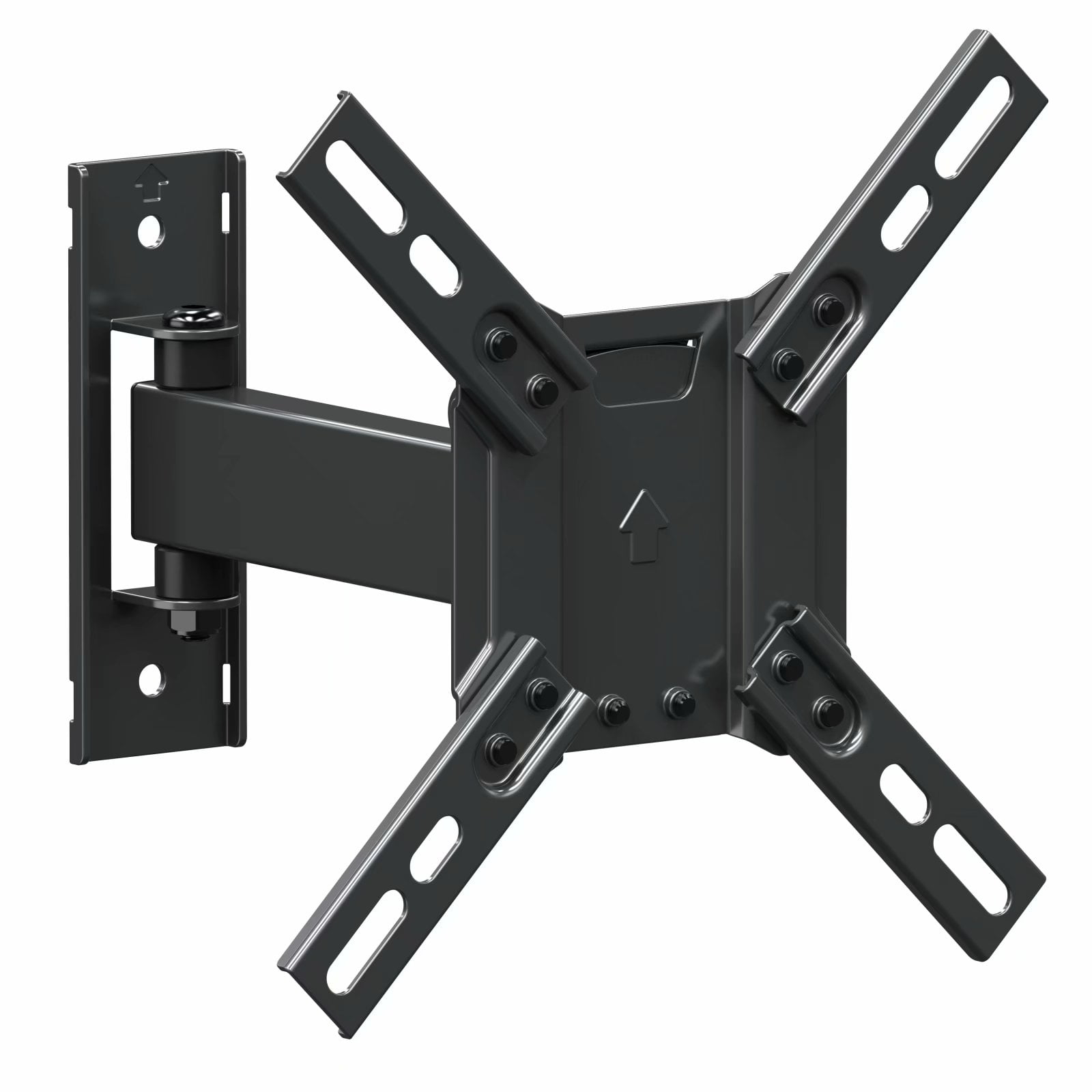

#TV BRACKETS TV#
It also comes with integrated wire management, so you’ll never even notice your cords when it’s extended! Ceiling TV Mount So it’s great in an area where you can pull it out a distance for viewing, but tuck it out of the way when not in use. This mount also gives you up to 30 inches of extension out and away from a wall (the single arm will give you about 22 inches on average). For this reason it’s most often used in larger areas with bigger TVs, as we previously mentioned.
#TV BRACKETS INSTALL#
It can also handle much larger TVs than its smaller single arm counterpart, but you have to have two studs to install the mount. The dual arm articulating TV mount offers lots of reach and nearly endless adjustable viewing angles. However for living rooms, media rooms, and great rooms (where most people will have a TV larger than a 50 inch) you will need the single arm’s big brother. So it’s a great option for smaller TVs in kitchens, sitting rooms, or bedrooms. The drawback to this mount is it can only handle up to a 50 inch TV. So it is the perfect choice for mounting a TV in the corner of a room or in applications where you’d like to add a smaller TV and need the viewing adjustability. The single arm mount only needs one stud. It has several advantages over it’s bigger dual arm brother in the next section. Single Arm Articulating TV MountĪ single arm articulating mount is a very versatile way to mount your TV. This is why we always prefer to use a Tilt Mount over a Fixed Mount. Then you have the lovely job of removing the TV, re-running new cords, etc. Over time cords (such as an HDMI) that are bent at a severe angles, sometimes even 90 degree angles, start glitching and failing. The added benefit of not having to squeeze cords into a tight space (like behind a fixed mount) is reliability. It helps create a super clean wireless look with no hanging cords or nearby components needing a surface to sit on. Even smaller components like a ROKU or Apple TV can be attached to the back on the mount (assuming you’ve got a power source dropped behind the TV, which we can do). It allows you to tilt and adjust the viewing angle, as well as allowing plenty of room between the TV and the wall for the cords. This type of TV mount is what we always suggest against a fixed one. For this reason, we here at Stereo and Video Center try to suggest against using these. This can cause premature failure of cords and components. This is fine depending on the seating arrangement, but the other issue is the room for cords and components between the TV and wall.Ī fixed mount gives very little space to run wires, and depending on the location of the inputs on the back of the TV you could run into an issue with wires being bent and crimped to fit into them. Once the TV is on the wall you cannot adjust the viewing angle. The fixed mount option is just as it sounds. Fixed TV MountĪ standard fixed mount is the most affordable option, but it does have a few cons compared to the others available.

Let’s break down the types of mounts you could use so you can make an educated decision. Using the right mount can make or break your new viewing experience. The biggest factor in mounting a TV, next to choosing the proper location, is of course the mount you use to do it. If you’ve given thought to doing it, you’ve also probably had some questions or concerns. Mounting a TV can have multiple benefits for you and your family:


 0 kommentar(er)
0 kommentar(er)
